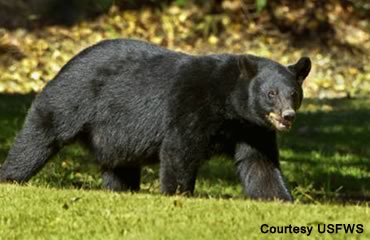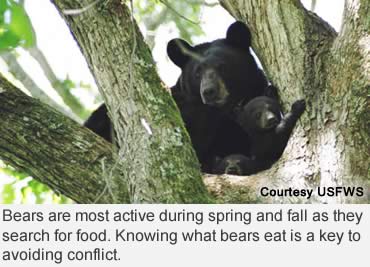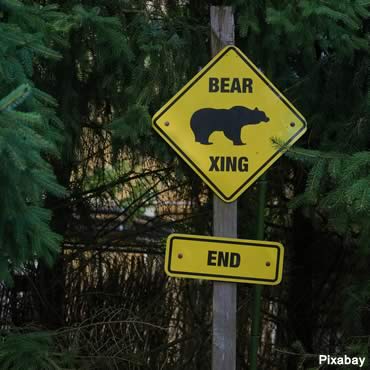This fall as bears actively forage for food in preparation for a winter nap, the Louisiana Department of Wildlife and Fisheries is recommending a website for anyone who realizes there are more bears in the neighborhood than there used to be.
Professionals at Wildlife and Fisheries are recommending BearWise.org as the place to learn how to coexist with the state’s growing number of black bears.
Sound advice from BearWise.org is as close as the internet.
You aren’t mistaken. There are more black bears. Early in our country’s history, they roamed forests throughout the lower 48 states, but over time and with population growth, bear numbers and their habitat shrunk.
 As states focused on conservation and management efforts, things changed. Black bears now have made a dramatic comeback, in not only Louisiana but throughout much of the Southeast, and their range is expanding.
As states focused on conservation and management efforts, things changed. Black bears now have made a dramatic comeback, in not only Louisiana but throughout much of the Southeast, and their range is expanding.
When bears begin appearing in new areas with suitable habitat, it becomes more important for individuals and communities to learn how to coexist with them.
The increase in the number of bears was officially recognized more than a year ago, in April 2016, when the Louisiana black bear was removed from list of endangered species by the U.S. Fish and Wildlife Service. The Louisiana black bear is a subspecies of black bear unique to Louisiana, western Mississippi and eastern Texas.
The Bearwise.org website offers steps to take to prevent human-bear conflict, while providing recommendations and information on resources to resolve problems. One goal, naturally, is to encourage efforts to keep bears wild.
 BearWise.org is supported by the Southeastern Association of Fish and Wildlife Agencies (SEAFWA), an organization whose members are from the state agencies which have primary responsibility for managing and protecting the fish and wildlife resources in 15 states, Puerto Rico and the United States Virgin Islands.
BearWise.org is supported by the Southeastern Association of Fish and Wildlife Agencies (SEAFWA), an organization whose members are from the state agencies which have primary responsibility for managing and protecting the fish and wildlife resources in 15 states, Puerto Rico and the United States Virgin Islands.
SEAFWA’s member states are Alabama, Arkansas, Florida, Georgia, Kentucky, Louisiana, Mississippi, Missouri, North Carolina, Oklahoma, South Carolina, Tennessee, Texas, Virginia and West Virginia.
As bear populations expand, BearWise.org becomes an increasingly valuable reference source to learn more about bears, how to best coexist with them, and news from communities that have successfully reduced bear-human conflicts.
The 6 BearWise Basics found on the website include these essentials:
 1 NEVER FEED OR APPROACH BEARS
1 NEVER FEED OR APPROACH BEARS
Feeding bears (intentionally or unintentionally) trains them to approach homes and people for more food. Bears will defend themselves if a person gets too close, so don’t risk your safety and theirs!
2 SECURE FOOD, GARBAGE AND RECYCLING
Food and food odors attract bears so don’t reward them with easily available food or garbage.
3 REMOVE BIRD FEEDERS WHEN BEARS ARE ACTIVE
Birdseed and other grains have a high calorie content making them very attractive to bears. The best way to avoid conflicts with bears is to remove feeders.
4 NEVER LEAVE PET FOOD OUT
Feed outdoor pets portion sizes that will be completely eaten during each meal and then remove leftover food and food bowl. Securely store these foods so nothing is available to bears.
5 CLEAN AND STORE GRILLS
After you use an outdoor grill, clean it thoroughly and make sure that all grease and fat is removed. Store cleaned grills and smokers in a secure area that keeps bears out.
6 LET NEIGHBORS KNOW
Share news with your friends and neighbors about recent bear activity and how to avoid bear conflicts. Bears have adapted to living near people; are you willing to adapt to living near bears?
For more facts about bears, visit BearWise.
Resources: BearWise.org and the Louisiana Department of Wildlife and Fisheries
For more information about moon phases and dates and times of full moons, visit here.
To learn more about what’s in the sky above, click here.